Comments / Questions (32)
![]() Raija Ronkainen wrote:
Raija Ronkainen wrote:
Saisinko sinisen neuletakin ohjeen. Tein jo takakappaleen puseron ohjeen mukaan.
17.09.2020 - 18:36
![]() Fuchs wrote:
Fuchs wrote:
Je ne comprends rien à l’assemblage du col de la veste: poser 2 rangs au point mousse.... et continuer en cotes.... pouvez-vous m’expliquer avec plus d’amples détails pour finir la veste en /6 ans Merci d’avance
05.07.2020 - 16:56DROPS Design answered:
Bonjour Mme Fuchs, vous relevez les mailles le long de l'encolure (y compris celles en attente) de sorte que votre nombre de mailles soit multiple de 2 +1 (ex. 81). Tricotez ensuite en côtes 1/1 avec 1 m point mousse de chaque côté, autrement dit, au 1er rang sur l'envers (après avoir relevé les mailles sur l'endroit), tricotez: 1 m point mousse, (1 m env/1 m end) répétez de(à) jusqu'à ce qu'il reste 2 mailles et terminez par 1 m env, 1 m point mousse. Bon tricot!
06.07.2020 - 09:38
![]() Fuchs wrote:
Fuchs wrote:
J’ai terminé les diminutions avant d’atteindre les 38 cm pour le dos; de ce fait je continue de tricoter jusqu’à 40 cm... est ce normal? Merci...
05.05.2020 - 14:30DROPS Design answered:
Bonjour Mme Fuchs, possible, votre échantillon est juste en hauteur? Il ne s'agit que de 2 cm, ça devrait le faire. Bon tricot!
05.05.2020 - 15:19
![]() Marilyn wrote:
Marilyn wrote:
I'd love to make this pattern but it says I need to use Silketweed in addition to Alpaca. can I use just Alpaca I can't get the silketweed yard? What is the purpose of this second yarn?
02.04.2020 - 21:43DROPS Design answered:
Dear Marilyn, this pattern has been updated to be worked with 2 strands DROPS Alpaca (1 each colour held together as just one) to get the required texture and colour. Happy knitting!
03.04.2020 - 07:50
![]() Marion wrote:
Marion wrote:
Kann man auch nur mit einem Faden/Wolle stricken? Wird das Strickstück dann dünner oder passt die Strickschrift dann nicht mehr?
22.02.2020 - 15:17DROPS Design answered:
Liebe Marion, wenn Sie mit nur 1 Faden stricken möchten, benutzen Sie dann 1 Faden der Garngruppe C - es wäre dann die beste Alternative, wenn Sie mit nur 1 Faden Alpaca (= Garngruppe A) stricken, dann bekommen Sie die richtige Maschenprobe nicht und das Strickstück wird zu klein sein. Hier lesen Sie mehr über Alternative und hier über Maschenprobe. Viel Spaß beim stricken!
24.02.2020 - 08:22
![]() Eeva Sumiloff wrote:
Eeva Sumiloff wrote:
Hei. Olen loppumetreillä mutta kaulus tuottaa päänvaivaa. Mitä tarkoittaa: s-luvun tulee olla jaollinen 2 + 1 s:11a? Toivon pikaista vastaustanne. Ihana ohje. Kiitos ohjeistanne, niistä on ollut monesti apua. Eeva
11.09.2019 - 11:38DROPS Design answered:
Hei, silmukkaluvun tulee olla 2 silmukalla jaollinen, lisäksi tarvitaan vielä 1 ylimääräinen silmukka. Toisin sanoen silmukkaluvun tulee olla pariton.
19.12.2019 - 13:57
![]() Sylvie wrote:
Sylvie wrote:
Bonjour je voudrais tricoter ce modèle de pull uniquement avec un fil drops alpaga ( Sky) nº4est ce possible en tricotant en 4,5 ou 5? Merci
13.12.2018 - 17:33DROPS Design answered:
Bonjour Sylvie, ce pull se tricote avec 2 fils Alpaca (groupe A) que l'on peut remplacer par 1 fil du groupe C (par ex Nepal ou Air), Sky faisant partie du groupe B, il ne sera pas une alternative qui vous permettra d'avoir le bon échantillon. Vous trouverez ici plus d'infos sur les alternatives. Bon tricot!
14.12.2018 - 08:08
![]() Els Grootenboers wrote:
Els Grootenboers wrote:
Hallo, Ik begrijp de beschrijving van de raglan niet. Ik brei voor een kind van 1 jaar. Moet ik dan elke 2e naald een steek minderen? Totaal dus 10 keer? Ik kom dan echter niet aan het aantal centimeters zoals afgebeeld. Wat te doen. mvg,
18.06.2018 - 13:25DROPS Design answered:
Dag Els, Je kant eerst een aantal keer (volgens jouw maat) om de vier naalden af en daarna een aantal keer (volgens jouw maat) om de 2 naalden. Per keer dat je afkant voor de raglan kant je aan beide zijkanten af.
18.06.2018 - 19:07
![]() Els Grootenboers wrote:
Els Grootenboers wrote:
Goedemorgen ik wil graag de baby-trui 10-25 maken maar zie dat het garen dat er gebruikt is niet meer bestaat. Kunt u mij adviseren welke kleur alpaca ik het best kan gebruiken om de kleur te benaderen die op het patroon staat? Bij voorbaat dank, Els Grootenboers
02.06.2018 - 10:42
![]() Jannie Schymann wrote:
Jannie Schymann wrote:
Jeg har strikket to bluser tidligere og finder opskriften perfekt og bruserne fine. Nu vil jeg gerne strikke den som trøje med knapper hele vejen ned i midt forstykke, men kan ikke i opskriften se, hvordan man strikker den ?
09.10.2016 - 11:33DROPS Design answered:
Hej Jannie. Der mangler denne del i den danske opskrift. Jeg skal bede om at faa tilföjet dette. I mellemtiden kan du maaske bruge den norske version her
10.10.2016 - 15:57
DROPS Baby 10-25 |
|
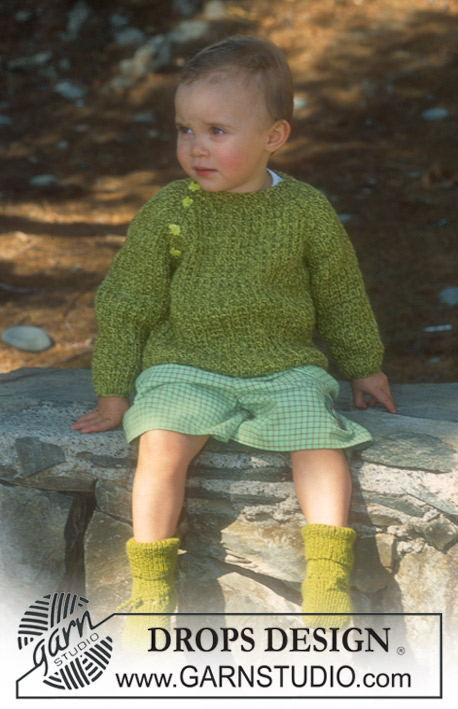 |
 |
DROPS raglan jumper and socks
DROPS Baby 10-25 |
|
|
Knitting tension: 17 sts x 22 in stocking st with double thread on needle size 5 mm = 10 x 10 cm. Garter st (back and forth): knit all rows. Rib: *K1, P1*, repeat from *-*. Pattern: Row 1: *K1, P1*, repeat from *-*. Row 2: Stocking sts. Repeat row 1 and 2. Buttonhole: 1 buttonhole = cast off 3rd st from edge and make a yo over cast off st on return row Decreasing tip (apply to raglan): Dec as follows from RS: Before 4 (1) edge st: K2 tog. After 4 (1) edge sts: slip 1 st as if to knit, K1, psso. Dec as follows from WS: Before 4 (1) edge st: P2 tog into back of st. After 4 (1) edge sts: P2 tog. ------------------------------------------------------------------ Back piece (jacket and sweater): Cast on 46-50-56-62-66 sts (incl 1 edge st each side) on needle size 3.5 mm with 1 thread Alpaca and 1 thread Silketweed (double thread) and knit 2 cm Rib. Change to needle size 5 mm and continue in pattern. Remember the knitting tension! When piece measures 19-20-22-23-25 cm cast off 3 sts each side for armhole and dec for raglan inside 4 edge sts (4 edge sts in garter sts (blue jacket) or 1 edge sts in garter sts, k2, 1 sts in garter sts (green sweater)) - see decreasing tip above: 1 st on every 4th row a total of 6-6-4-3-3 times and 1 st on every other row a total of 0-1-6-9-10 times. At the same time when piece measures 28-30-33-35-38 cm put the middle 16-18-18-20-20 sts on a thread for neck and dec 1 st towards neckline on next row = 5 sts left on each shoulder. Cast off when piece measures 30-32-35-37-40 cm. Front piece (sweater): Cast on and knit as back piece. Cast off for armhole and dec for raglan as described for back piece, but after 3-4-3-4-4 cm cast off for buttonhole on the 4 edge sts towards the right raglan. Make another 2 buttonholes on every 3-3-4-4-4 cm. At the same time when piece measures 26-28-31-32-35 cm put the middle 12-14-14-16-18 on a thread for neck and dec to shape the neckline on every other row: 2 sts 1 time and 1 st 1 time = 5 sts left on each shoulder. Cast off when piece measures 30-32-35-37-40 cm. Left front piece (jacket): cast on 27-29-32-35-37 sts (incl 1 edge sts in side and 4 edge sts towards mid front) on needle 3,5 mm with 1 thread Alpaca and 1 thread Silke-Tweed. Knit rib in 2 cm, but work the 4 front band sts in garter sts. Change to needles 5 mm and continue in pattern. When piece measures 19-20-22-23-25 cm cast off 3 sts at side for armhole. Then dec to raglan in side as on back piece. At the same time when piece measures 26-28-31-32-35 cm put 10-11-11-12-13 sts towards mid front on 1 thread for neck. Then cast off towards neck on every other row: 2 sts 1 time and 1 st 1 time = 5 sts remains on shoulder. Cast off when piece measures 30-32-35-37-40 cm. Right front piece (jacket): Cast on and work as left, but reversed. At the same time make button holes along front band - see explanation above. Cast off for button holes when piece measures: size 1/3 months: 2, 8, 14 and 20 cm. size 6/9 months: 1, 8, 15 and 22 cm. size 1 year: 1, 7, 13, 19, and 25 cm. size 2 year: 2, 8, 14, 20 and 26 cm. size 3/4 year: 1, 8, 15, 22 and 29 cm. Left sleeve (jacket and sweater): Cast on 30-32-34-36-38 sts (incl 1 edge st each side) on needle size 3.5 mm with 1 thread Alpaca and 1 thread Silketweed (double thread) and knit 2 cm Rib. Change to needle size 5 mm and continue in pattern. When piece measures 3-4-4-5-5 cm inc a st each side on every 5-4-4-4-4 row a total of 3-4-4-5-6 times = 36-40-42-46-50 sts. When piece measures 17-18-21-26-29 cm cast off 3 sts each side for armhole = 30-34-36-40-44 sts. Now dec for raglan each side inside 1 edge st – see decreasing tip above: 1 st on every other row a total of 11-13-14-14-15 times and 1 st on every row a total of 0-0-0-2-3 times = 8 sts left. Cast off, sleeve now measures approx 28-31-34-40-44 cm. Right sleeve (jacket): Knit as left. Right sleeve (sweater): Cast on and knit as left sleeve. When piece measures 17-18-21-26-29 cm cast off 3 sts each side for armhole. Now cast on 4 sts on the right side of sleeve (button band, knitted in garter sts). Dec for raglan as done for left sleeve as follows: on the left side inside 1 edge st, on the right side inside 4 edge sts – see decreasing tip above. Continue and cast off as described for left sleeve. Assembly (jacket): Sew all raglan seams; lay 2 row garter st from body piece over 1 edge st from sleeve and sew every st tog with small stitches, sew with Alpaca. Pick up (incl sts from threads) approx 67 to 81 sts (divisible with 2 + 1) around the neck on needle 3,5 mm with 1 thread Alpaca + 1 thread Silke-Tweed. Work rib with 1 garter stitch + K1 on each side towards mid front - at the same time dec evenly to approx 55 to 71 sts on 1st row. On 2nd row make 1 button hole over the other on front band. Cast off when neckband measures 2 cm. Sew sleeve- and side seams in one within 1 edge st. Sew on buttons. Assembly (sweater): Sew raglan seams except the one with buttonholes with Alpaca. Pick up approx 67 to 81 sts (incl sts from threads front and back, and divisible by 2 + 1) round the neck on needle size 3.5 mm with 1 thread Alpaca and 1 thread Silketweed (double thread). Knit Rib, at the same time adjusting no of sts to approx 55 to 71 on first row. On 2nd row make a buttonhole in line with the others. Cast off then neck measures 2 cm. Sew sleeve and side seams inside 1 edge st. Sew on buttons. -------------------------------------------------------------------- SOCKS: Size: 1/3 – 6/9 -12/18 months – 2 years Foot length: 10-11-12-14 cm DROPS double pointed needles size 2 and 2.5 mm DROPS crochet hook size 2.5 mm Knitting tension: 26 sts x 35 rows on needle size 2.5 mm in stocking sts = 10 x 10 cm Rib: *K1, P1*, repeat from *-* Moss sts: 1st row: *K1, P1. 2nd row: P over K, K over P. Repeat 2nd row. Cast on 58-60-62-64 sts on needle size 2 mm with Alpaca. Knit Rib. When piece measures 4-5-5-5 cm K tog 3 sts mid back, knit 4 rounds in Rib and K tog 3 sts mid back = 54-56-58-60 sts. When piece measures 10-11-12-13 cm change to needles size 2.5 mm and continue in stocking sts, at the same time dec to 46-50-50-54 sts. After 2 rounds knit next round as follows: *K 2 tog, yo*, repeat from *-*. Knit 1 round in stocking sts and now knit the middle 10-12-12-14 sts (= upper foot) in moss sts – put remaining 36-38-38-40 sts on a thread. After 4-5-5.5-7 cm pick up 10-12-14-16 sts on each side of upper piece and put sts from thread back on needles = 66-74-78-86 sts. Knit 1.5-2-2.5-3 cm in moss sts over all sts and P 1 round. Now cast off all sts of both sides of the middle 10-12-12-14 sts and continue over these in moss sts for sole. Cast off when sole measures 9-10-11-13 cm. Sew the sole to the sock. Crochet a chain in ch measuring approx 30-35 cm and pull through the row of holes. |
|
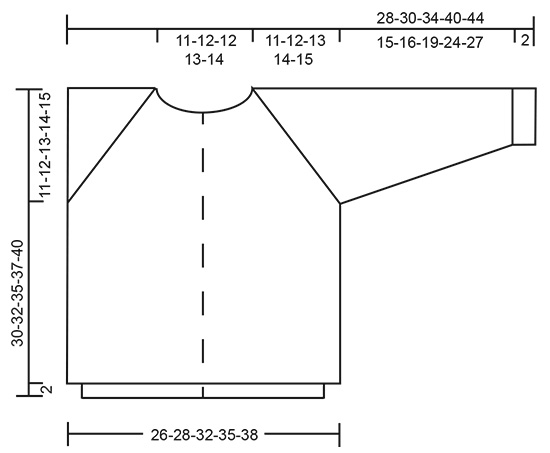 |
|
Have you finished this pattern?Tag your pictures with #dropspattern or submit them to the #dropsfan gallery. Do you need help with this pattern?You'll find 32 tutorial videos, a Comments/Questions area and more by visiting the pattern on garnstudio.com. © 1982-2025 DROPS Design A/S. We reserve all rights. This document, including all its sub-sections, has copyrights. Read more about what you can do with our patterns at the bottom of each pattern on our site. |
|







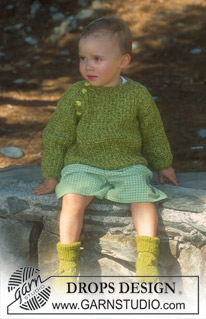






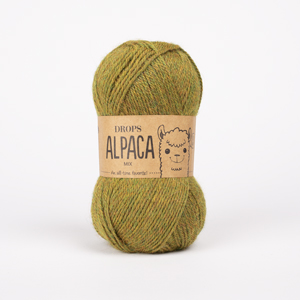

















































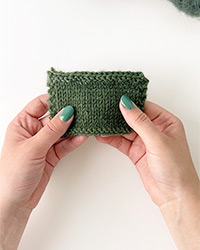
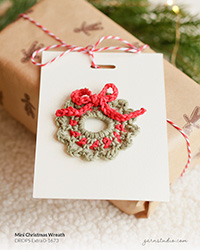
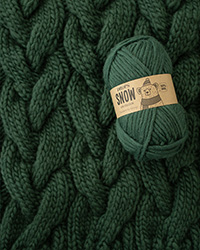
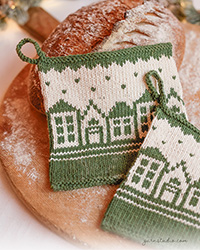
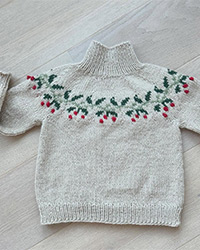
Post a comment to pattern DROPS Baby 10-25
We would love to hear what you have to say about this pattern!
If you want to leave a question, please make sure you select the correct category in the form below, to speed up the answering process. Required fields are marked *.